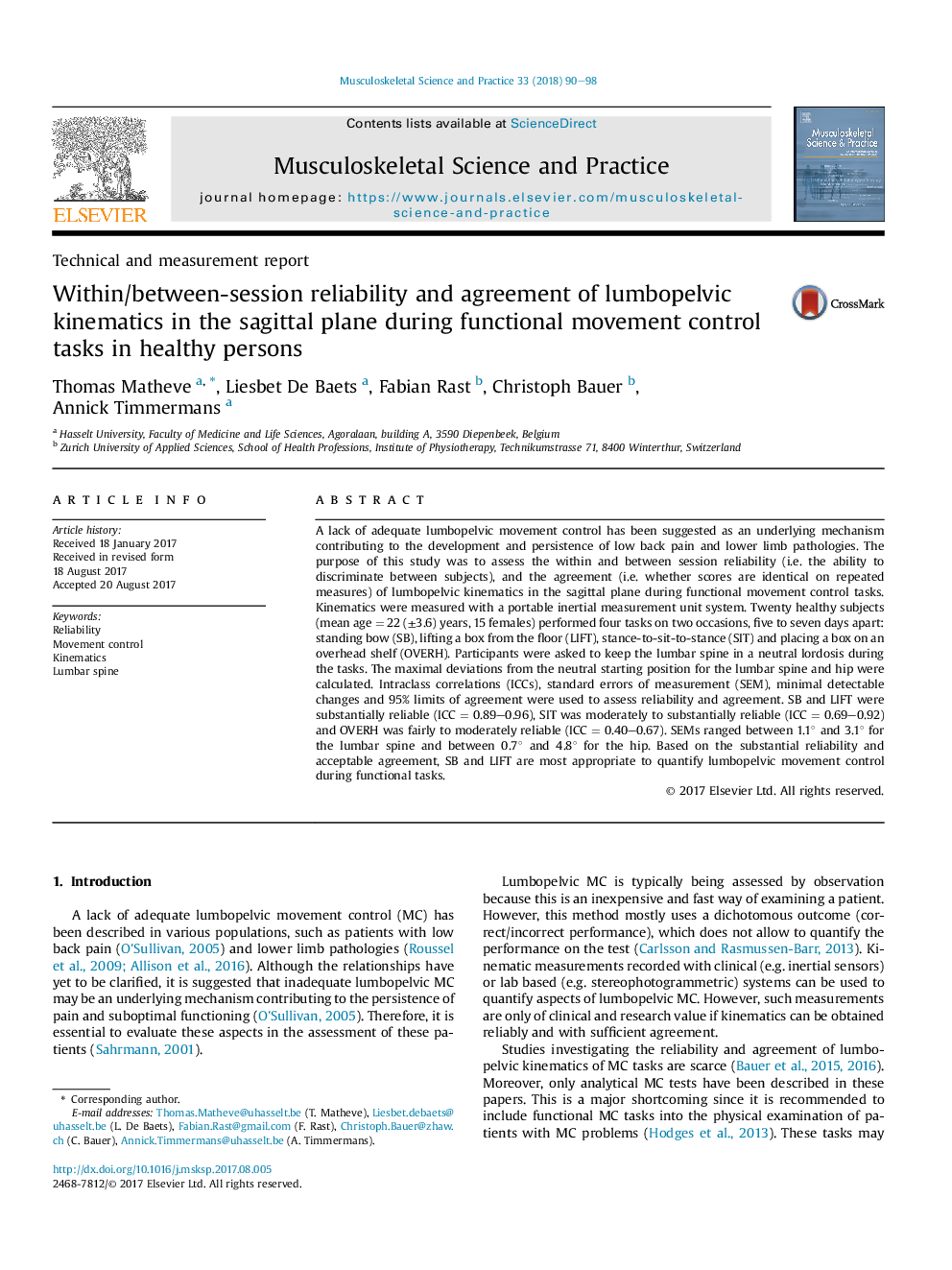| Article ID | Journal | Published Year | Pages | File Type |
|---|---|---|---|---|
| 8924471 | Musculoskeletal Science and Practice | 2018 | 9 Pages |
Abstract
A lack of adequate lumbopelvic movement control has been suggested as an underlying mechanism contributing to the development and persistence of low back pain and lower limb pathologies. The purpose of this study was to assess the within and between session reliability (i.e. the ability to discriminate between subjects), and the agreement (i.e. whether scores are identical on repeated measures) of lumbopelvic kinematics in the sagittal plane during functional movement control tasks. Kinematics were measured with a portable inertial measurement unit system. Twenty healthy subjects (mean age = 22 (±3.6) years, 15 females) performed four tasks on two occasions, five to seven days apart: standing bow (SB), lifting a box from the floor (LIFT), stance-to-sit-to-stance (SIT) and placing a box on an overhead shelf (OVERH). Participants were asked to keep the lumbar spine in a neutral lordosis during the tasks. The maximal deviations from the neutral starting position for the lumbar spine and hip were calculated. Intraclass correlations (ICCs), standard errors of measurement (SEM), minimal detectable changes and 95% limits of agreement were used to assess reliability and agreement. SB and LIFT were substantially reliable (ICC = 0.89-0.96), SIT was moderately to substantially reliable (ICC = 0.69-0.92) and OVERH was fairly to moderately reliable (ICC = 0.40-0.67). SEMs ranged between 1.1° and 3.1° for the lumbar spine and between 0.7° and 4.8° for the hip. Based on the substantial reliability and acceptable agreement, SB and LIFT are most appropriate to quantify lumbopelvic movement control during functional tasks.
Related Topics
Health Sciences
Medicine and Dentistry
Complementary and Alternative Medicine
Authors
Thomas Matheve, Liesbet De Baets, Fabian Rast, Christoph Bauer, Annick Timmermans,
